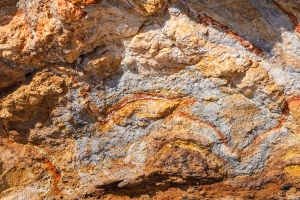GS3 – Science & Technology

Context
- ISRO’s upcoming Mangalyaan-2 (Mars Orbiter Mission 2) may use Matanamadh village in Kutch, Gujarat, as a potential test site.
- The discovery of jarosite, a mineral also found on Mars, makes the region significant for planetary studies.
Key Facts
Jarosite Discovery
- Reported in 2016 by SAC (Ahmedabad).
- Found in 55-million-year-old rocks (Paleocene period).
- Formed when iron + sulphur + potassium minerals oxidise with water.
- On Mars → evidence of past water activity.
Geological Similarity with Mars
- Earth & Mars shared similar geological processes millions of years ago.
- Kutch terrain: harsh, rocky, thorny, water-scarce → close to Martian surface.
- Useful for rover trials, instrument calibration, biogeochemistry studies.
Significance for ISRO
- Mars Simulation Environment:
- Harsh, barren, water-scarce conditions = close replica of Martian surface.
- Alternative to Ladakh’s Tso Kar Valley (already used for high-altitude Mars-like studies).
- Planetary Analog Studies:
- Helps in understanding environmental and chemical conditions that sustain or extinguish life.
- Provides geological and mineralogical insights comparable to Mars.
- Field Applications:
- Rover mobility testing.
- Environmental and atmospheric condition analysis.
- Study of past climate evolution on Mars.
Global Parallels
- Jarosite deposits also found in Mexico, Canada, Japan, Spain, Utah & California (USA).
- These sites are used globally for Mars analogue studies.
Challenges & Advantages
- Advantage: Remote location → minimal human disturbance, unique mineralogy.
Challenge: Harsh environment, difficult accessibility.




